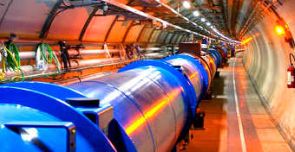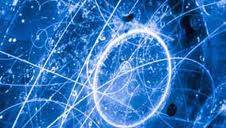Einstein’s Relativity Theory can survive ultrafast neutrinos

A recent experiment by OPERA (Oscillation Project with Emulsion-tRacking Apparatus) seems to suggest the possibility that neutrinos can travel faster than light. The Italian researchers claimed to have measured the 730-kilometer trip between CERN and its detector to within 20 centimeters and the resulting time to within 10 nanoseconds. They have detected more than 16,000 events measured over the past two years where neutrinos have been faster than light by 60 nanoseconds on the mentioned distance.
In case such evidence should be confirmed by other experiments, should we rethink the Einstein’s Theory of Special Relativity? In my opinion, not necessarily.
First of all, the Special Relativity assumes that there is a maximum threshold for the speed of matter, energy, and information in the universe. Such a speed is called c and it is assumed to be the speed of light in empty space, that is, vacuum. However the space is never empty. Even where the density of matter is mostly zero, there are many fields in space, especially gravitational and electromagnetic ones. Furthermore, vacuum is polarized because of virtual pair production, that is, the creation and immediate annihilation of pair of fermions (particle and anti-particle) in space.
Second, we know that the speed of light in a mean is lower than c. In fact, when light pass through a material medium, its speed is diminished because of electro-magnetic interaction with the particles composing that material. The ratio between c and the speed v at which light travels in a material is called the refractive index n of the material, and is calculated as the ratio n = c / v.

Third, photons interact with the electro-magnetic field, one of the four fundamental forces in the Universe, as well as with weak nuclear and gravitational fields. On the other hand, neutrinos interact only with the weak nuclear and gravitational field. At the energies of the experiment, weak forces operate only on the extremely short distance scales found in an atomic nucleus. In actuality, that force is stronger than the electromagnetic one, but its messenger particles (W and Z bosons) are so massive and sluggish that they do not faithfully transmit its intrinsic strength.
So, let us assume that there is a maximum speed in universe and call it c. Since there is nothing like a real vacuum, we have to suppose that both photons and neutrinos do not really reach that speed, although there are very close to it. Furthermore, since photons have more probabilities to interact with fields and matter in space, we may assume that light is slowed a little bit more with respect neutrinos. That would explain the results of Opera experiment without breaking the Special Relativity of Einstein.
Of course, this is just a conjecture, not a real theory. A new realistic model of space should be developed and simulations have to be performed to verify if such a conjecture might explain the resulting data. Anyway, it is worth a try, isn’t it?
Comments (1) to «Einstein’s Relativity Theory can survive ultrafast neutrinos»
No trackbacks or pingbacks to «Einstein’s Relativity Theory can survive ultrafast neutrinos»
Please use Facebook only for brief comments.
For longer comments you should use the text area at the bottom of the page.
Facebook Comments




















Good post